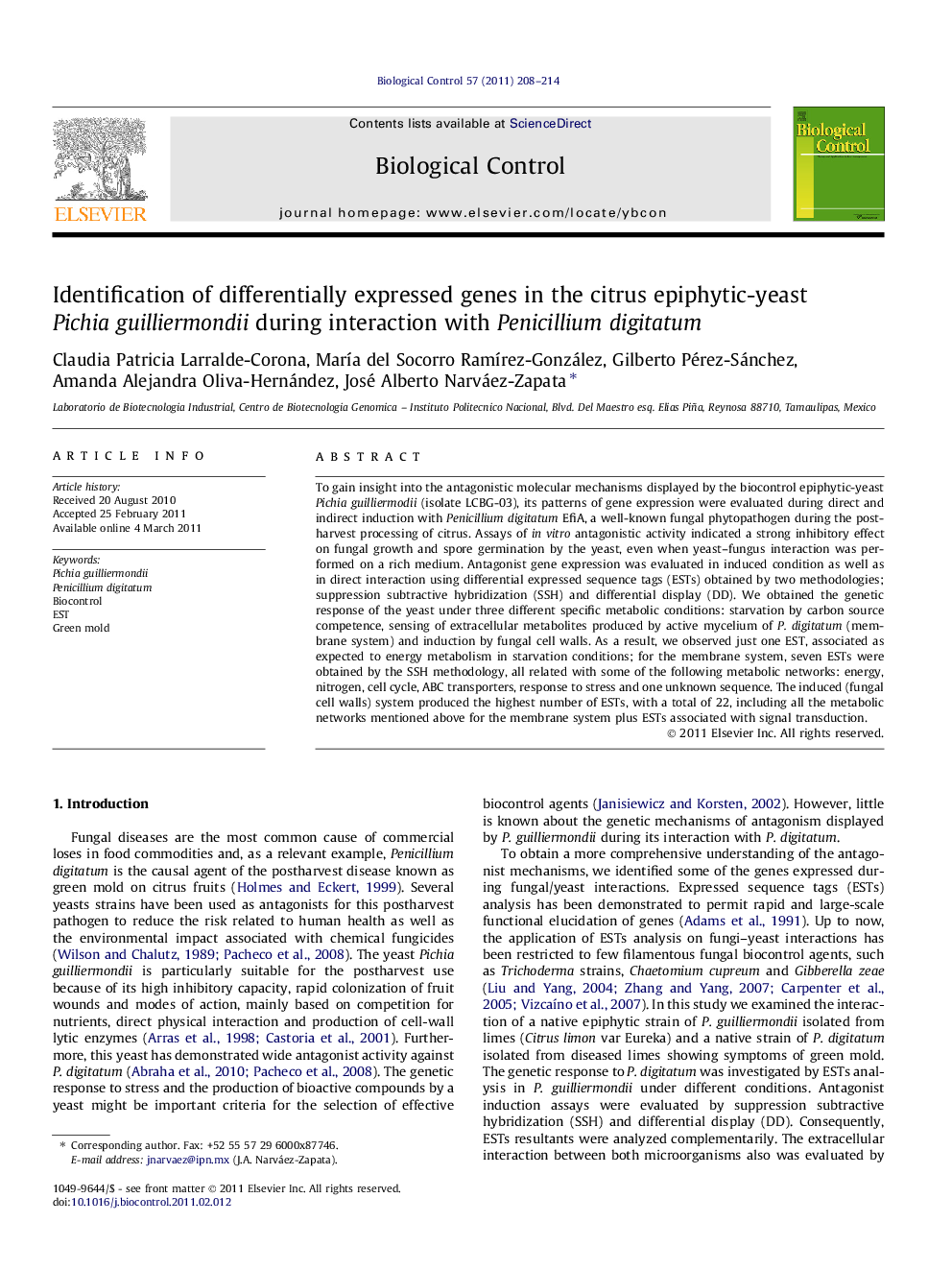| Article ID | Journal | Published Year | Pages | File Type |
|---|---|---|---|---|
| 4504236 | Biological Control | 2011 | 7 Pages |
To gain insight into the antagonistic molecular mechanisms displayed by the biocontrol epiphytic-yeast Pichia guilliermodii (isolate LCBG-03), its patterns of gene expression were evaluated during direct and indirect induction with Penicillium digitatum EfiA, a well-known fungal phytopathogen during the postharvest processing of citrus. Assays of in vitro antagonistic activity indicated a strong inhibitory effect on fungal growth and spore germination by the yeast, even when yeast–fungus interaction was performed on a rich medium. Antagonist gene expression was evaluated in induced condition as well as in direct interaction using differential expressed sequence tags (ESTs) obtained by two methodologies; suppression subtractive hybridization (SSH) and differential display (DD). We obtained the genetic response of the yeast under three different specific metabolic conditions: starvation by carbon source competence, sensing of extracellular metabolites produced by active mycelium of P. digitatum (membrane system) and induction by fungal cell walls. As a result, we observed just one EST, associated as expected to energy metabolism in starvation conditions; for the membrane system, seven ESTs were obtained by the SSH methodology, all related with some of the following metabolic networks: energy, nitrogen, cell cycle, ABC transporters, response to stress and one unknown sequence. The induced (fungal cell walls) system produced the highest number of ESTs, with a total of 22, including all the metabolic networks mentioned above for the membrane system plus ESTs associated with signal transduction.
Graphical abstractFigure optionsDownload full-size imageDownload as PowerPoint slideHighlights► Pichia guilliermodii have a strong biocontrol effect on Penicillium digitatum. ► Differential expressed sequence tags (EST) were obtained in different culture conditions. ► ESTs were obtained by suppression subtractive hybridization and differential display. ► Dual cultures produced ESTs associated with cell cycle and antibiotic production. ► Induced cultures produced ESTs associated to membranes and signal transduction.
